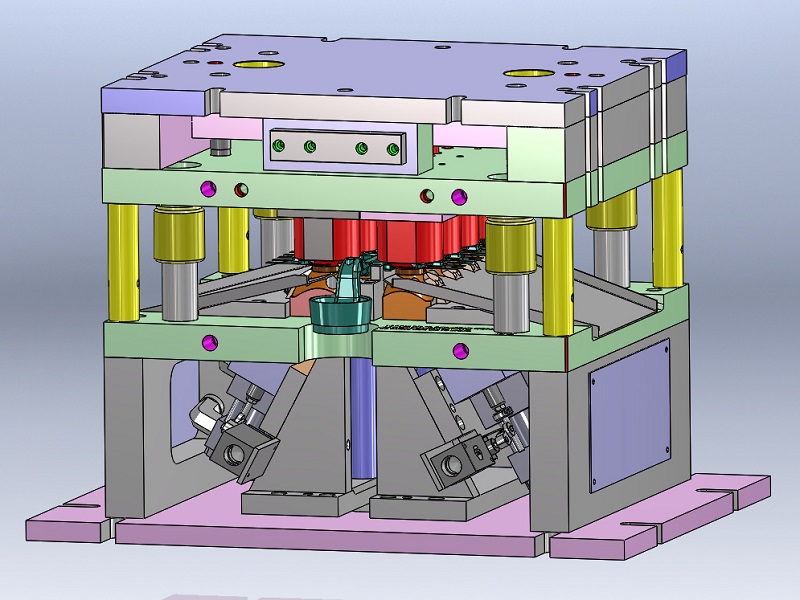
Die design is the most common method used by tool & to cut or shape the material mostly using a Press. Like molds, dies are a cost-effective way to create customized products ranging from paper clips to advanced automobile parts. Tool and die makers are responsible for manufacturing complex equipment like cutting tools dies, molds, and other machinery and parts
The die includes cutting and forming sections which typically use a special kind of hardenable steel known as tool steel. Meanwhile, it can also contain sections created from carbide or other hard, wear-resistant constituents.
Different Types of Die
1- Forming Dies: To support the process of creating materials like plastic and sheet metal, forming dies are essentially mounted into presses. The first part is known as the punch and performs the prime primary bending, blanking, or stretching operation. While the other part is called the die blocks and locks the workpiece while performing a similar operation.
2- Stamping Dies: Operating as progressive or transfer systems, stamping dies is sent to a single machine that is equipped with numerous stations required to be punched. The metal sheet progresses from one stage to the other and the last step includes blanking operation. On the other hand, transfer systems are similar to the progressive one but the blanking step comes at the first operation. Engineers often opt for hit stamping as it is faster and more affordable to the product designing process. The process requires single-station tools that strike the product every time it is sent off. It doesn’t require heat as stamping is a cold-forming operation.
3- Draw Dies: This method is capable of drawing sheet metal into different kinds of metal cups. Draw die forms flat blanks into models and depend on a punch to expand the middle area of each blank. A blank holder is used layer to prevent the formation of wrinkles during the entire process as it is capable of holding the edge of the metal taut.
4- Blanking: With the help of blanking, engineers can cut flat material by chopping the extra and exterior edges. The method helps in developing a detailed flatness after compressing the solid.
5- Hand Transfer Dies: This type of tool and die design process depend on a transport system to transfer each product part from one station to another. There can be two types of hand transfer dies; one is single die and the other is a part of a larger group of dies aligned in a row. The die is known for its versatile, cost-effective and ideal features that befit easy transformation from press to press.
6- Compound Dies: Components that demand more than one cutting operation in a single-stage stroke and stage comes under compound dies. This type of product design costs higher than any other die design type as one stroke produces only one component. Also, compound dies demand excessive force levels and pressure.
 +91-120-4736400
+91-120-4736400 info@sphinxworldbiz.com
info@sphinxworldbiz.com
















